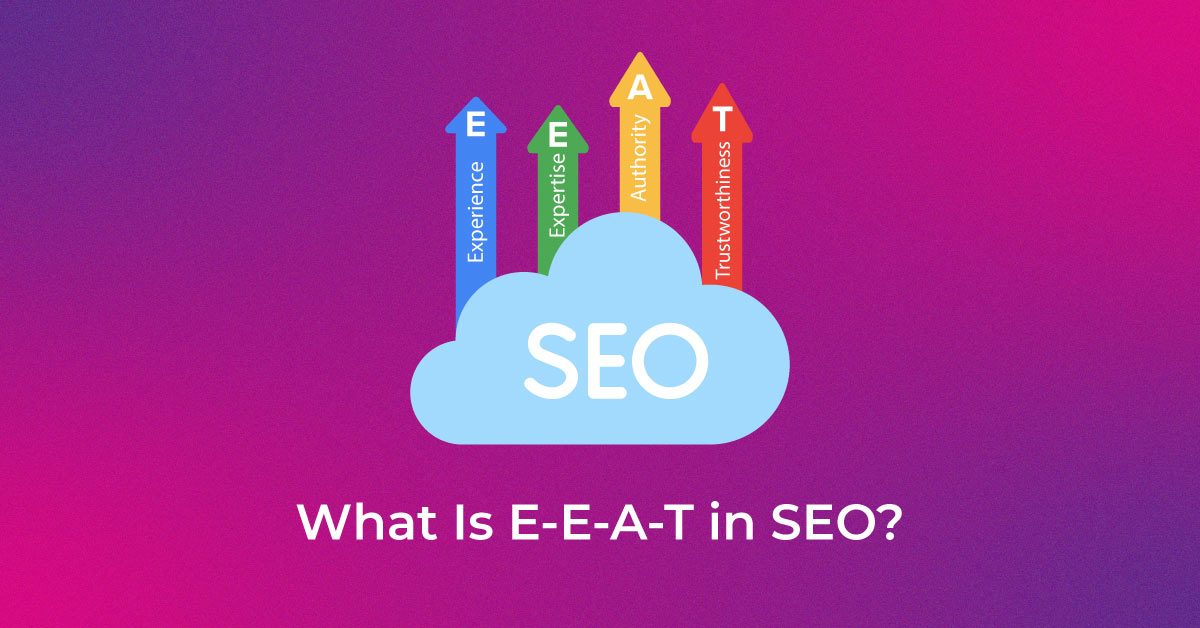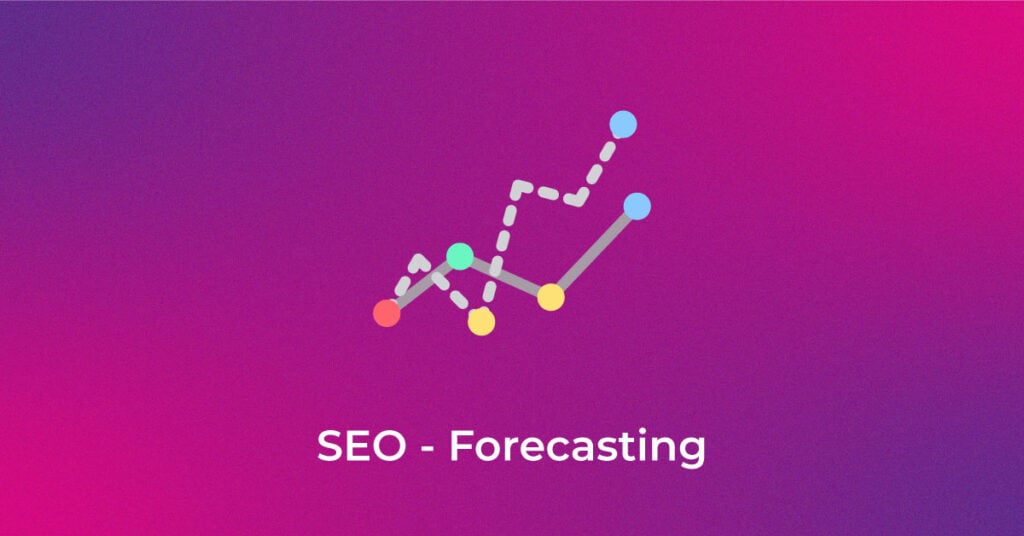|
Getting your Trinity Audio player ready...
|
What if someone says that you can predict your website’s performance and future traffic? Yes, you heard that right. You can plan your SEO (Search Engine Optimization) strategy effectively, allocate resources, and cope with the changes in traffic flow and buying behavior through SEO forecasting. SEO forecasting tool helps you stay ahead of your competitors and ensure your site is optimized for higher rankings. In this article, you will learn about SEO forecasting, why it is essential for your business, and techniques to forecast your organic traffic.
What Is SEO Forecasting?
Knowing your website’s current performance is essential. But predicting how it will perform in the future is more crucial to ensure long-term success. This is where you need SEO forecasting.
SEO forecasting refers to leveraging first-party and third-party data to predict future traffic and its value to your website as a result of your SEO strategy. Forecasting SEO traffic allows you to predict your website’s search engine visibility in terms of keyword rankings, organic traffic and more, identify potential issues, and take necessary steps before they affect your search engine rankings. The changes may include altering your site content, keywords, or link-building strategy. SEO forecasting may also involve competitor analysis, where you can track your competitors’ strategies to optimize your SEO efforts in the future.
How SEO Forecasting Works?
Now that you know what forecasting SEO is, let’s understand how it works.
To forecast a website’s future traffic, you can extract first-party past performance data from platforms such as Google Search Console or Google Analytics. Once relevant data is available, use formulas to know what they predict about the traffic volume over the coming year or some other period. But SEO is not a single-player game. You have competitors who are also applying SEO to stay relevant. If your competitors’ SEO is more robust than yours, your website visibility and profits will suffer. So, using third-party data is equally essential while forecasting for SEO.
Platforms like Moz and Ahrefs allow scripts and deliver predictions about a website’s traffic growth and that of competitors too.
Why Is SEO Forecasting Important?
With the continuous changes in search engine optimization and the unpredictability of search engine algorithms, you must secure yourself from unexpected setbacks. Forecasting the performance of an SEO strategy can offer immense benefits. Both enterprises and agencies can benefit from SEO forecasts. By estimating the future performance of an SEO, they can discover a roadmap to their SEO goals and allocate resources accordingly.
Here’s more about why SEO forecasting is important:
You have a competitive advantage over other SEOs
Forecasting SEO allows you to track and analyze the SEO strategies of competitors and modify your strategy accordingly. You can identify the weaknesses and strengths of the competitors’ approach and areas where you can improve and, in turn, boost the returns of your SEO investment. A constant vigilance of your SEO strategy and that of others can offer you a competitive advantage over other SEOs.
It presents a case for further resources
SEO forecasting is an excellent way to predict what resources you might need in the future. It provides a roadmap to future actions so that businesses allocate resources at the right places. For instance, if you have proof of how publishing more content can drive traffic and increase revenue, you can ask to allocate more resources to the content marketing department over others.
SEO forecasts improve client relationships
An SEO marketing agency or an SEO consultant, through forecasting, can forge better client relationships. How? With the help of SEO forecasting, professionals can prove how their strategy can lead to more traffic and revenue. This strengthens communication and relationships with the clients.
Modern SEO Forecasting Techniques
The overall aim of SEO forecasting is to estimate the returns on SEO investment. Do you expect traffic to increase over a period of one year? Are you expecting a revenue increase at this time? Seeking answers to these questions, you can decide what route to take to ensure success.
Here are some of the most common types of SEO forecasting techniques:
A broad estimation
This is the easiest method of SEO forecasting. Here, you analyze the past performance of a website’s organic traffic and take future actions. Let’s assume you witness an increase of 15% in traffic over a specific period of time. Using this metric, you can predict the future flow of organic traffic based on your current SEO efforts. While this technique gives you an idea of how your strategy will perform, it does not consider competitors’ SEO or Google algorithm updates.
Forecasting SEO using Excel
Another technique to forecast SEO is using software like Excel or Google Sheets. These platforms have several built-in functions that help you perform complex calculations easily. By entering the figures and applying a formula, you can get a picture of your KPIs (Key Performance Indicators) and calculate the business’s ROI (Return on Investment) and conversion rates.
Metrics to Consider for SEO Forecasting
Here is the list of metrics you should consider while SEO forecasting:
Search Volume
Search volume refers to the average monthly amount or volume of searches for a specific query. Using this essential metric in SEO forecasting allows you to predict a keyword’s potential to contribute to SEO returns.
Click-through rate
CTR (Click-through rate) is a measure of the rate of clicks divided by the impressions a website gets from a particular query. By using the metric, you can estimate the volume of organic traffic you can drive based on the website’s organic impressions and position.
Seasonality
Seasonality refers to the seasonal spike in the use of specific keywords, such as Diwali decorations during the festival of Diwali. Analyzing the seasonality of keywords can help estimate the changes in keyword search volumes.
Conversion rate
The conversion rate is the percentage of website visitors who have taken a relevant action and converted out of the total number of visitors. It is the moment a site visitor responds to a call to action such as a purchase, sign-up, or download. This metric in SEO forecasting helps in predicting website engagement based on its traffic and in conversion rate optimization.
Organic traffic trend
Organic traffic trend measures how much traffic a website is getting from organic search for a specific period of time. It is an essential metric to forecast how organic traffic will increase or drop in the future.
Search intent
As the term suggests, search intent is the purpose behind a particular query. It can be used to forecast the possibilities of converting a visitor from organic traffic. For example, transactional search intent has a higher possibility of conversion than informational intent.
Sales Conversion rate
The sales conversion rate is the number of leads that convert into paying customers. You can use the metric to estimate sales based on your organic traffic.
Average order value (AOV)
The average order value is the average value of all the orders. The AOV metric allows you to forecast business revenue based on your conversions.
Create an Algorithm with Python
Now that you know how forecasting can provide great value to your SEO efforts, let’s find out how you can use Python to derive data-driven answers about trends in organic search and traffic.
In order to create predictive models, you can use coding languages such as Python and create an algorithm. Similar to spreadsheets, Python comprises a set of built-in functions that allows you to analyze data easily. The coding language can extract vast amounts of historical data and make data-driven predictions.
With Python, you can use data from Google Analytics reports as well as third-party data to avail of a forecast SEO. Those who are not proficient in data science can organize data through the model. You can also hire a data scientist or a web developer.
Dealing with Uncertainties in SEO Forecasting
When it comes to forecasting SEO, predicting future website traffic and search engine rankings with the right metrics can seem challenging. It may not give you a clear picture of the future SEO roadmap. Multiple factors, such as seasonality, economic trends, etc., can impact your organic traffic and are difficult to track in a forecast.
Here’s how you can deal with the uncertainties in SEO forecasting:
- Use SEO forecasting to make decisions, but it should not be the single source of your planning
- SEO forecasts should be aided with E-E-A-T (Experience, Expertise, Authoritativeness, and Trustworthiness)
- Take your previous stories of success and struggle into consideration and make decisions based on them
- Track the changes in company strategy, goals, budget, and competitors’ strategy, and update your SEO forecast regularly
Conclusion
Thus, SEO forecasting can help you identify potential opportunities to optimize your SEO efforts, track competitor activity, and know keyword performance in search. However, changes in Google algorithms, company strategy, goals, SEO budget, or competitors’ strategy can impact the actual outcome. So, forecasting for SEO should not be a one-time approach. It is crucial to update the forecasts at regular intervals after considering the changes that have arisen to ensure your data about future performance is accurate.
Popular Searches
How useful was this post?
0 / 5. 0













